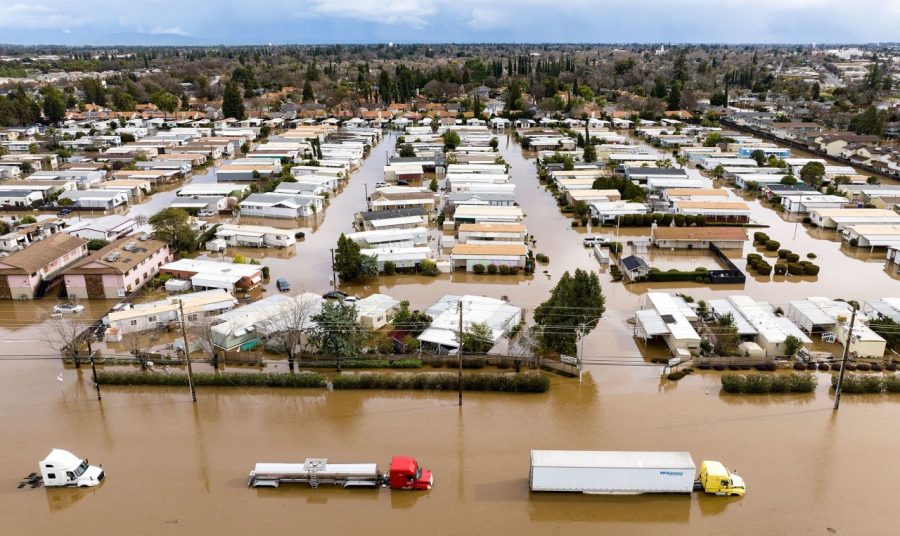The Atmospheric Rivers in California are Finally Coming to an End: What Now?
This is a neighborhood that has been flooded from the recent storms in California.
January 27, 2023
Atmospheric rivers have been unleashing large storms upon the coastal and mountainous regions of California, harming and killing residents. So, what is causing these storms and what is California doing to cope with them as well as plan for them in the future?
Since the week of January ninth, California has been bombarded with a series of disastrous storms that have destroyed cities and homes. Officials have said that 16 individuals have been killed – which is more than the mortality rate of wildfires over the past two years.
The final storms arrived last week, but they were not nearly as strong as those at the beginning of this month. “Maximum rainfall totals should be around an inch, with probably only about half an inch around the Bay Area. In the Sierra Nevada, another 6 to 10 inches of snow are probable.” says Jason Samenow, a writer for The Washington Post.
The most recent storms “…reflect, in part, a warming climate, which brings a heightened risk of storms that are more intense and destructive.” says Julie Bosman in her article California, Inundated from the New York Times.
With the weather becoming a more pressing and possibly recurring matter, California is brainstorming short term and long term solutions.
Short term solutions are currently just remaking and redistributing flood and storm information and protocols. California has been stuck in a drought for so long and hasn’t had exposure to a storm of this magnitude, so citizens had no knowledge as to how to deal with it. Since the effects of this storm have been so devastating, and it seems they will be recurring, making sure citizens know what to do in these events is the priority.
Long term solutions have more to do with construction of new reservoirs for storm water to drain into and expanding rivers to reduce flooding. Some of these constructions would be problematic as it involves removing housing and inserting levees in their place. Though this idea was put forward, Jay Lund, a professor of civil and environmental engineering at the University of California says “The large-scale infrastructure that already exists in California to manage floods has, for the most part, carried out the task of diverting water. What it needs are tweaks, including widening flood bypasses and creeks.”
Creating safety procedures and planning ahead is the only way we can promote safety within our community and limit mortality rate when natural disasters such as these occur. As another state that is exposed to the ocean, are we prepared for if a storm like this comes our way?

